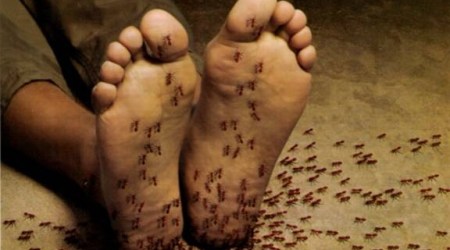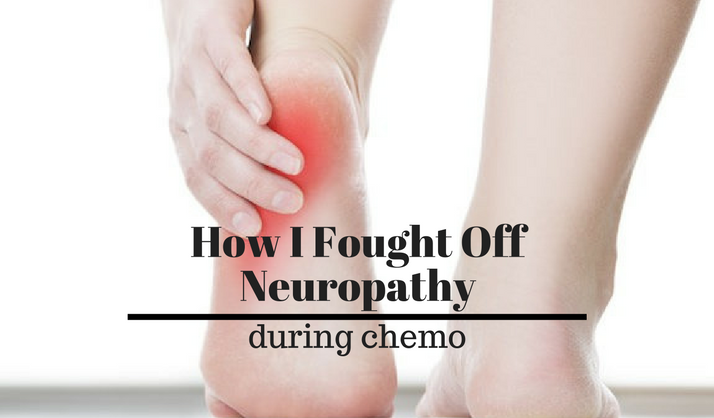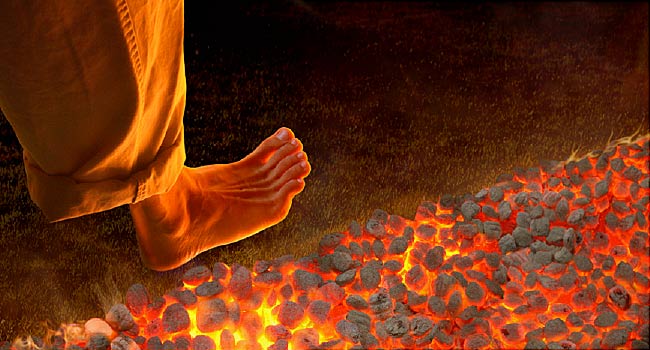In Association with Neuropathy Treatment Centers of America, ChiroCenter is pleased to announce a BRAND NEW APPROACH to the Treatment of Peripheral Neuropathy.
New Understandings in the Field of Peripheral Neuropathy are now Providing New Hope for those who suffer with the Agony and Misery of this Disease.
New Hope For Neuropathy!
If you’re someone who deals with the misery and agony of peripheral neuropathy; the ongoing soreness, numbness, burning, stinging, tingling, tightness, pain and distress of this very aggravating condition; the feeling of walking on pins and needles or ground up glass, or have the sensations of little bugs crawling all over you when none are actually there, or are a family member of someone who does, this report may be one of the most worthwhile reports you’ve ever read.
There is some NEW AND VERY EXCITING NEWS IN THE FIELD OF NEUROPATHY TREATMENT that may very well provide you with the help of which you’ve been searching for so long!
In this article, I’ll be sharing with you the latest advancements in neuropathy understanding; what they are, the kinds and causes, as well as how the various symptoms affect people differently. Then, I’m going to reveal to you a new and exciting neuropathy treatment approach that has been developed in just the past year.
You may be wondering, “Why does my doctor not know of this?” It’s very simple. At the time of this writing, there are fewer than 150 health care offices of any kind throughout the entire nation utilizing this program. Coming out of Arizona in 2009 (where there are lots ofpeople with neuropathy) it’s so new that unless you were connected with the researchers and developers as I’ve been, then you’re a doctor that doesn’t even know this program exists.
Peripheral Neuropathy – What Is It?
Peripheral neuropathy is a disease afflicting 20 million people in the United States. That’s about 1 out of every 17! Most are over the age of 45, at a time when they should be enjoying their lives the most. When looking at the name, Peripheral means “that which is at or near the perimeter.” Neuro means “nerve” and opathy means “pathology or sickness.”
So as the name implies, in speaking about peripheral neuropathy (often just called neuropathy) we are referring to distressed, damaged, sick and/or dying nerves that are located in the outer aspects of the body and which are usually close to the skins surface.
Three Primary Kinds of Neuropathy
There are three primary kinds of neuropathy. They include Motor Neuropathy, Autonomic Neuropathy and Sensory Neuropathy. Understandings in the fields of motor and autonomic neuropathy have not yet brought forth many answers for people who deal with these kinds of neuropathy. Motor and Autonomic Neuropathy are most frequently viewed as permanent problems associated with partial or full paralysis of nerves or muscles. It is for that reason we will focus this report on Sensory Neuropathy – the kind that most people deal with.
Peripheral Sensory Neuropathy
Peripheral sensory neuropathy is a kind of neuropathy that causes numbness and/or various kinds of pain in the feet and legs (later the hands and fingers) that creates a great deal of distress and agony for many, many people! It is the most commonly experienced kind of peripheral neuropathy by the vast majority of neuropathic pain sufferes.
In this form of neuropathy the tiny nerves that serve the skin become “disconnected” and fail in their ability to transmit normal sensations to the brain, such as in decreased touch perception, or with hyper-excited nerves that are responsible for causing all the pain, swelling, sting, burning and other symptoms associated with this disease.
Many Unique, Unpleasant And Unwanted Sensations
Not everyone has the same symptoms. Unique challenges are found in different people. For some, it results in various forms of numbness. For others, the nerves are undergoing abnormal internal stimulation when no such outside stimulation is present, and often results in different types of pain ranging anywhere from burning, aching, shock-like sensations, hot or cold feet or legs, tight, vice-like sensations around the legs or ankles, pins and needles – to the feeling of dozens of bees stinging you when you are barely touched, and for some, the feeling of hundreds of little bugs crawling all over your feet and legs when none are really there. Significantly compounding the problem, one very frequently experiences both numbness and pain – meaning too little AND too much stimulation of different nerves.
In addition to the already described symptoms of neuropathy, many people report other unique and abnormal sensations as a result of peripheral nerve damage – such as the feelings of walking on foam rubber, or their toes “feeling as large as fence posts.”
The descriptions of abnormal sensations surrounding neuropathy are almost endless! Additionally,often one will experience both sensory and motor neuropathy, which when compounded with numbness and balance issues serves to increase the likelihood of injuries from falls, many quite serious that frequently result in broken hips and other fractures.
Causes and Risk Factors – A Growing Concern
Peripheral Sensory Neuropathy comes about from many different causes – also known as “risk factors.” These risk factors are divided into three different categories. They include metabolic (chemical),mechanical (compressive), and genetic (hereditary). Each of them creates their own set of unique challenges for those who suffer with this disease. Let’s take a look at all three………
Metabolic – Diabetes Is Bad! Diabetic Neuropathy Makes How You Feel Even Worse!
The most common metabolic cause of neuropathy that we see in our office is neuropathy coming from diabetes. The problem is growing steadily worse as this very concerning and prevalent disease affects more and more people at an earlier age – and as people live longer.
Nearly 60% of all people with diabetes develop diabetic neuropathy.
As if the pain, numbness, swelling, burning, tingling, sleepless nights,balance issues, along with all the other symptoms that go along with neuropathy aren’t bad enough, approximately 86,000 Americans each year undergo diabetic amputations as a result of uncontrolled neuropathy. This new treatment is capable of preventing many of those amputations, especially if they can be caught early on.
Chemical – Chemotherapy, Alcoholism, Medical & Industrial Toxins
A large percentage of people who have undergone chemotherapy also develop peripheral neuropathy, as many of the chemicals aimed at killing cancer cells also damage peripheral nerves cells. Previous exposure to industrial or war toxins, alcoholism and a fastly growing number of individuals developing neuropathy as a result of very commonly prescribed prescription drugs also represent the causative factors of a very large population of people dealing with neuropathy.
Mechanical – Bulged, Herniated, Degenerated Disc; Failed Back Surgery & Sciatica
Moving to the next category are the mechanical (compressive) forms of neuropathy. These causes are also very common, and most often result from mechanical joint problems that compress the nerves as they emit from the spine (or are compressed inside other joints) before they reach their final destinations. We’ve all heard of the very common and painful condition known as Sciatica.
Sciatica is a form of neuropathy which causes pain and/or numbness in the back or leg(s); a condition that is caused by compression of the sciatic nerve as it emits from the lower spine, usually due to disc bulges, disc herniations, mechanical misalignment of the vertebra, or because of disc degeneration; also known as spinal arthritis (another mechanical joint problem of the spine).
The nerve transmissions become disrupted in the spine, much like what happens to water flowing through a hose if you “put a kink in it” – the normal flow of the water ceases.
In the nerve, this disruption of nerve impulses results in numbness, pain and most all the other symptoms associated with neuropathy.
Restless Leg Syndrome and Periodic Limb Movement Disorders are other such conditions also frequently caused by compressive joint problems. While not always, these conditions frequently contain many of the same neuropathic symptoms described in this report such as pain, tingling, burning, tightness and so on – as well as an uncontrollable urge to move the legs and feet to find relief. In fact, any nerve that becomes compressed due to mechanical joint problems, whether it be in the back, neck or otherwise, and causes a disruption of the tissue function that it serves, is scientifically known as mechanical neuropathy.
Traditionally, chiropractic has had wonderful success in helping most people with these mechanical kinds of neuropathy challenges.
Genetic & Hereditary
Moving from the most to the least common, the final category of neuropathies are those caused by a genetic or hereditary factor. They include neurological challenges such as Friedriech’s Ataxia and Charcot Marie Tooth Disease. These are fairly rare and while very significant to those afflicted, make up less than 1% of neuropathies. Multiple Sclerosis, while not necessarily known to always be hereditary, is also a form of neuropathy.
ISCHEMIA – The Primary CAUSE of Neuropathy
Let us now move our discussion into the physiological causes of how and why neuropathy develops. By doing so, it allows us to develop a QUALITY plan for a CAUSE-ORIENTED treatment approach offering a higher chance of success, rather than one based entirely on symptoms as is found with many of today’s failed conventional approaches.
It has been found through extensive research that the cause of almost all neuropathic pain; the cause of distressed and damaged peripheral nerves which create the many various symptoms of neuropathy – is from a body destroying process known as ISCHEMIA. Ischemia is one of those scientific words which simply mean “tissue death due to starvation.” This is vitally important to understand, because peripheral nerves are LIVING TISSUES NEEDING FED.
All living things require nutrients and oxygen and need to be as free of poisons and toxins as possible in order to grow, thrive and prosper. Your peripheral nerves are NO exception! When functioning normally, nerve tissues receive nutrient rich, highly-oxygenated blood that is carried to them by microscopic capillaries; tiny-tiny-tiny blood vessels that are easily clogged.
Just like A Clogged Pipe
When these tiny nutrient and oxygen carrying vessels DO become clogged, many nerve tissues fail to receive the needed nutrients and oxygen in order to survive. When this happens they become damaged – or die!
It’s the same that happens when an occluded artery causes a massive heart attack – only with neuropathy, it happens on a massive scale damaging literally millions of microscopic peripheral nerves.
In the case of diabetes, too much glucose fills your bloodstream clogging the capillaries and preventing the nerve tissues from receiving the nutrients and oxygen they need. In compressive forms of neuropathy, the direct physical pressures placed on the nerves by aberrant joint function shut down the flow of O2 and nutrients to the nerves – much like what happens if you run over a water hose with a car tire!
Drug Damage
Myelin is a substance made chiefly of cholesterol and surrounds the nerve fiber much like the rubber coating that wraps around an electrical wire. When this coating erodes away, the nerves short-circuit, once again leading to the symptoms of peripheral sensory neuropathy. This is commonly found in people taking cholesterol lowering drugs known as Statins.
In cases surrounding chemotherapy, the drug toxins damage the nerve endings as they attempt to kill the cancer. In mechanical neuropathy, pressure on the nerve at the constriction point shuts down nutrient and oxygen flow into the nerve tissue. Nutrient and O2 restriction to nerves first damages an insulating coating around them known as myelin. Myelin is a substance which protects the nerves and aids in transmission of the nerve signal itself. When myelin is damaged, the whole nerve is damaged – leading to the vast majority of the symptoms found in neuropathy.
To make matters worse, once oxygen restriction damages the myelin, the nerves have difficulty coordinating pore and capillary dilation in the skin, preventing proper skin perspiration and the ability of the legs to “breathe” as they should.
This often leads to more challenges such as swelling, tight, vice-like sensations in the legs and ankles as well as hot or cold feelings in the feet or legs.
As you can see, once this snowball starts rolling, it’s often like a line-up of falling dominoes leading to more and greater problems.
The GOOD NEWS with peripheral neuropathy is that peripheral nerves can heal and go through a process of rebirth, if the proper procedures are put in place and if the cause of the condition can be caught in time.
For Most People – Drug Treatments Just Don’t Work Very Well!
As we’ve previously discussed, there are few common conditions that create as much ongoing concern or agony as that of peripheral neuropathy. As the numbness and/or pain grow worse, it can even cause many people to want to give up on life. When the challenges get this bad, many people are willing to try practically anything – any cream, any drug, any pill, powder, potion, lotion or syrup!! Unfortunately, painful sensory neuropathies are RARELY correctable with drugs. This is because they don’t address ISCHEMIA.
You may be surprised to learn most drug treatments for neuropathy are NOT EVEN INTENDED to treat neuropathy, but are actually designed to treat other conditions! For example, Neurontin (Gabapentene) is actually an anti-convulsive designed to treat seizures. Elevil (Amyltriptine), Tofranil (Imapramine) and Cymbalta (Duloxetine) are anti-depressants. There are a few others.
None of the drugs on the market, not even Lyrica (Pregabalin – which just happens to be the latest in the line-up of hard-to-pronounce names),addresses the TRUE UNDERLYING CAUSE of neuropathy, which as we’ve discussed is that of damage to the nerves due to ISCHEMIA;restricted blood, nutrient and oxygen flow!
Of course, the many side-effects of these drugs also frequently lead to other health problems from a result of long-term usage (such as immune system, liver, kidney and stomach disorders, kidney failure, increased risk of kidney dialysis and suicidal tendencies – just to name a few.
Yes, “There is an exception to every rule.” It’s true some people might find some temporary relief, for a while – until these drugs stop working – but long-term failure and disappointment with almost every conventional treatment for neuropathy – is most always the end result. The individual meets with discouragement time and time again, until many begin feeling like a yo-yo on a string – frequently bouncing from the heights of hope – to yet another let down! The end result is many patients simply carry on down the road of “continued hopelessness.”
Why? It’s because all conventional treatments focus ONLY on the treating of symptoms, while ignoring the underlying causes resulting in ISCHEMIA.
Unfortunately, in the deepest midst of this disease some people develop so much pain that minutes – every minute – seems like hours! They turn to sleeping agents to get them through the day, or Valium, Percocet, Oxycotin and other high-powered pain killers just to find a moment away from the misery – just to get by. This is neuropathy at its most dangerous.
“Is There Any Real Hope Worth Believing In?”
For many people with peripheral neuropathy, YES! You’ll recall in the opening comments of this report, I promised I was going to share with you a new and exciting neuropathy treatment approach that has just recently been developed and is providing hope to thousands of people with neuropathy.
One of the things that makes this program so revolutionary is that it’s the FIRST andONLY neuropathy treatment program in existence that scientifically addresses the ACTUAL CAUSE of peripheral neuropathy – ISCHEMIA!
NEUROTCA – New Advances In Neuropathy Treatment
In association with Neuropathy Treatment Centers of America, ChiroCenter is pleased to bring this brand new and revolutionary new treatment approach for peripheral neuropathy to the people of Troy and our surrounding communities.
The mainstay of our peripheral neuropathy treatment program centers around a unit known as the Sensory Integrator, a painless low-level laser, also known as “soft” laser where the light from nearly 300 pulsed, infrared, light emitting diodes penetrates the skin of the feet and legs to assist in new capillary formation and nerve growth.
Introduced by NASA, this it was originally developed as a way to speed up cell regeneration rates to provide faster plant growth and food production for future long-term space missions. Once it was found to be effective with plants, inquisitive minds began researching it as a way to speed cellular regeneration to reduce healing time in health challenges of we human beings. When researching neuropathy, they weren’t disappointed!
This remarkable therapy nearly doubles the rate of human cell regeneration, exactly what is needed in peripheral neuropathy to assist in new capillary formation and peripheral nerve growth.
Additionally, it serves to release a natural pain relieving compound found in the soft tissue linings of your blood vessels known as Nitric Oxide, which again, helps bring about relief.
While this procedure is being performed, we’re also administering oxygen to flood your bloodstream with any additional fuel necessary for regeneration metabolism on a cellular level.
This alone is NOT ALL that’s needed in our battle against neuropathy! It’s been found that different nerve types in the body need different frequencies of vibration in order to heal and respond most efficiently. This is the part that most of our patients enjoy the most! Our program utilizes up to three different frequencies of vibration on different areas of your lower extremities, which further stimulates new capillary and nerve regeneration, and stimulates the re-connection of the peripheral nerves with the tissues they serve. Tissue vibration also serves to reintroduce proper sensation and balance, and in many cases further aids in pain reduction.
However, we still don’t stop here. We also utilize gentle and all important joint mobilization to help in removing any restrictions preventing proper joint and gait motions of the lower extremities that many people develop as a result of neuropathy. When necessary we employ reverse polarity therapy to aid in the re-integration and correct directional flow of your body’s natural electrical nerve currents.
From there, we look at any needed stretching or strengthening maneuvers, home procedures and/or personal coaching to help support your body in its quest to achieve the most optimum results your body is capable of providing you.
All these procedures are remarkably safe and for almost all people, totally painless! In our many years of practice, we’ve never before experienced a program where so many people look so enthusiastically forward to receiving their treatments!
Finally, most of our patients are very pleased and relieved to know we utilize no drugs and no injections! What a relief!
A Different Level of Thinking
For people dealing with the ongoing concerns of neuropathy, it’s clear to see this program is indeed “a different level of thinking.”
By now you can clearly see why the types of equipment and procedures we utilize in our peripheral neuropathy treatment program are so extremely important if you are to have an honest chance of ever defeating all or part of your neuropathy.
You can also clearly see the scientific rationale behind everything we do, and how what we do is always done for a specific physiological reason! However, that’s only part of the equation. The other parts of the equation are in knowing what procedures to utilize, at whatintensities, at what time, in what order, for what challenges, for whatassociated conditions and for what categories of the disease. This is what we are here for.
How does the program compare to all those other “conventional” forms of treatment out there you may have already tried? I believe you can clearly see by now this program is indeed a very different approach.
Sticking To The Same Place You’ve Been Stuck?
Mark Twain once said, “If we always do what we’ve always done, we’ll always get what we’ve always gotten – and keep sticking to the same place we’ve been stuck! ‘ You may indeed be someone suffering with neuropathy that needs “to make a change.” IF that change is NOTmade, in what ways do you think your neuropathy will be affecting you next year – or three, five or ten years from now?
If you’re like me, you just want straight answers, so here is the straightest answer I can give you. Until we’ve had the chance to examine you, I don’t know if we can help. I don’t know and can’t guarantee the results your body is capable of achieving for you. However, if you can qualify for our neuropathy program, and if we can accept you, what we can guarantee is we are going to provide you all the tools we can for the best possible chance of getting better!





